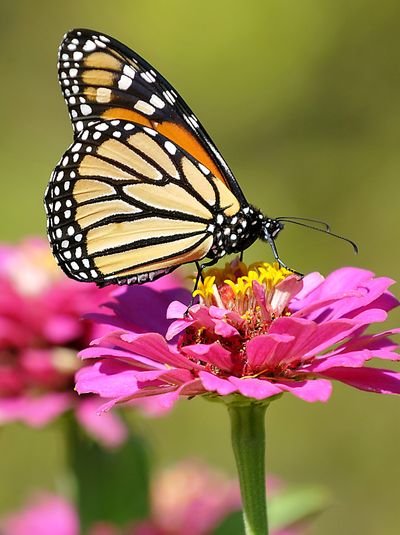Groups want endangered species protection for monarch butterfly

WASHINGTON – A coalition of environmental and food-safety groups is asking the Fish and Wildlife Service to grant endangered species protection to the monarch butterfly, whose U.S. population, the groups say, last year fell to 90 percent below its 20-year average.
In a petition asking for the designation, which would allow the federal government to more aggressively protect the butterfly and its habitat, the petitioners blamed Monsanto Co.’s Roundup herbicide and Roundup Ready crops for much of the decline.
“The vast majority of genetically engineered crops are made to be resistant to Monsanto’s Roundup herbicide, a uniquely potent killer of milkweed, the monarch caterpillar’s only food,” the Center for Biological Diversity, the Center for Food Safety and the Xerces Society said in a joint statement, also signed by monarch scientist Lincoln Brower of Virginia’s Sweet Briar College.
The statement says the “butterfly’s dramatic decline is being driven by the widespread planting of genetically engineered crops in the Midwest where most monarchs are born.”
“The dramatic surge in Roundup use with Roundup Ready crops has virtually wiped out milkweed plants in Midwestern corn and soybean fields,” the statement said.
In an emailed response, Monsanto spokeswoman Charla Lord said:
“Scientists think a number of inter-related factors are contributing to the decline and year-to-year variation of monarch butterfly populations. While weather events (snowfall and frost) at mountaintop overwintering sites and logging in Mexico continue to be factors, experts are also focusing on agricultural practices and land use changes that have reduced milkweeds along the migration path in central regions of North America.”
She said Monsanto would help “restore habitat that supports the monarch migration.”
The environmental and food-safety groups say the butterfly’s population has fallen from a high of 1 billion in the mid-1990s to about 35 million last year, and that number is only about a tenth of the 20-year average. The monarch is also threatened by climate change, drought and heat waves, urban sprawl and logging on their wintering grounds in Mexico, the petitioners said.
Tierra Curry, a senior scientist at the Center for Biological Diversity, said good weather this year may boost numbers when the group Monarch Watch does its winter survey, but “we’re at risk of losing a symbolic backyard beauty that has been part of the childhood of every generation.”
Gavin Shire, a spokesman for the Fish and Wildlife Service, said his agency was required by federal regulations to respond to the petition “to the extent practicable” within 90 days. The agency could decide to extend the review by up to nine months more before deciding on the request. The butterfly currently has no special protection designation from the FWS.